Introduction
One of the most talked about topics of the last year has been the Windows 8 debacle and how it is now much more difficult to install Linux because of the UEFI secure boot system.
I have just obtained my first laptop that contains Windows 8 and therefore my first laptop with UEFI and secure boot enabled.
So just how difficult is it to install Linux alongside Windows 8? I spent some time over the weekend installing Ubuntu alongside Windows 8 on this computer and the following is a guide showing the steps I performed to achieve this task.
If you have Windows 8.1 and you wish to install Ubuntu 14.04 I have created a new guide showing how to install Ubuntu 14.04 alongside Windows 8.1.
Click here if you are looking for a Windows 7 and Ubuntu dual boot guide.
For those of you who already have Ubuntu installed alongside Windows 8 I have written a new guide showing how to upgrade Ubuntu to the latest version without harming Windows 8.
If you are using Windows Vista then read this guide to installing Linux alongside Windows Vista
If you are using Windows XP then read this guide to installing Linux alongside Windows XP
If you have Windows 8.1 and you wish to install Ubuntu 14.04 I have created a new guide showing how to install Ubuntu 14.04 alongside Windows 8.1.
Click here if you are looking for a Windows 7 and Ubuntu dual boot guide.
For those of you who already have Ubuntu installed alongside Windows 8 I have written a new guide showing how to upgrade Ubuntu to the latest version without harming Windows 8.
If you are using Windows Vista then read this guide to installing Linux alongside Windows Vista
If you are using Windows XP then read this guide to installing Linux alongside Windows XP
A review of Ubuntu 14.04
Before you start it might be worth reading the latest review of Ubuntu 14.04 to make sure dual booting with Windows 8.1 is something you want to do.The hardware
The hardware that I used to compile this guide is the Dell Inspiron 3521 laptop which you can pick up for around £400 at Argos.
The Dell Inspiron 3521 has 6 gigabytes of RAM, an Intel core I3 processor, a 1 terabyte hard-drive and a 15.1 inch display.
Strategy
The actual strategy for installing Ubuntu alongside Windows 8 isn't much different to installing Ubuntu alongside Windows 7, Vista or even XP. There are just a couple of extra hurdles along the way.
- Backup your Windows partitions
- Shrink the Windows partition
- Create a bootable USB drive with Ubuntu on it
- Turn off fast boot and Disable secure boot
- Run the Ubuntu installer
- Partition the empty space (created after shrinking Windows partition)
- Complete the installation
- Reboot into the Ubuntu Live image
- Run the boot repair
- Test that everything works.
1. Backup your Windows partition
This is the most important step in the whole process, especially if you harbour any hopes of booting into Windows again should the worst happen.
It used to be the case that when you bought a computer you received a set of disks or a CD that had a rescue image on it. If the computer failed all you had to do was insert the disks or the CD and your computer would be restored as if it had just been delivered.
Computer manufacturers then took the step of creating rescue partitions on hard drives but now some have even stopped doing that. Even if your computer manufacturer did take the step of creating a rescue partition, because you are going to be messing around with the partition editor it would be a great idea to make sure you have recovery media that isn't in any way connected to the hard drive that you are partitioning.
Regardless of restoring to factory settings you will want to back up all those pictures, videos and all those songs you downloaded from iTunes.
Do not skip this step unless you have recovery media
As I am using a Dell I have two methods available to me to create recovery media and I am going to document both of them here. The chances are that the manufacturer of your computer has also provided software for creating recovery media. It is worth spending the time looking at the options available to you.
You should backup your computer anyway
Whether you intend to follow through with this guide or not and whether you decide Linux is or isn't for you I cannot stress enough the importance of creating recovery media.
If you still do not believe me about how hard it is to get the recovery media after the event go to Google (who aren't in any way evil) and try searching for recovering Windows 8 on a Dell, HP, Toshiba etc. You will probably end up paying for support.
Create recovery media using Dell's recovery tools
To open the Dell Backup and Recovery software move your mouse to the top right corner within Windows 8 and this will bring up the search icon.
Click on the search icon and start typing "backup". The "Dell Backup and Recovery" software will be the only option listed.
As you can see there is a large exclamation mark next to "Recovery Media". This icon appeared because at that point in time I had not created any recovery disks meaning that should the worst happen I was on my own.
If you see a large exclamation mark and a big orange status message saying "At Risk" it seems prudent to do something about that.
Clicking on the "Recovery Media" option displays the screen above. You have two options:
- Factory Backup
- Apps & Drivers
You can also decide the location to backup to. You can choose either DVDs or a USB drive.
If you are smart you will do both. Run the "Recovery Media" option once and backup to DVDs and then run it again and backup to USB. Imagine you backed up to DVDs and then decided to restore from them later on. DVDs have a habit of getting scratched and generally speaking you will need 2 or 3 DVDs which means there is more risk of a failure. Backing up to USB as well as DVD means you have hedged your bets.
You could of course just back up to USB but USB drives have the habit of getting lost or re-used for another purpose when you realise you need to transfer data from point A to point B.
Now I will point out that this process only backs up the Windows 8 system files in order to get Windows 8 back in the event of a failure. This does not backup all your pictures, documents and videos etc. I will come to that later on.
All you need to do to backup to DVD is insert the first disc and then press "Start". It takes a while to perform this process but it is definitely worth it. Just let it happen, go and get a coffee and watch a bit of television. Check back occasionally though because you will need to swap discs.
Once you have finished backing up to DVD repeat the process but backup to USB.
After running the "Factory Backup" click on the "Apps & Drivers". Now insert a blank DVD and click "Start". Again the process will take a little while but at least you will have a backup of all the applications that were installed when you bought the computer.
Creating recovery media using Window's 7 tools
Now the first backup section was a little bit specific to Dell computers. Allowing for the fact that you may not be using a Dell computer this section shows how to create a system image using the Windows 7 File Recovery tools. (I wonder why I couldn't find a Windows 8 one?).
To get to the Windows 7 recovery tools move the mouse to the top right corner and then select the search icon again.
Click on the "settings" option and then type "recovery". The option for "Windows 7 Recovery" will appear. Clicking on this option will display the above window.
There are 2 options here:
- Create a system repair disc
- Create a system image
The system repair disc will boot into Windows recovery mode. Choose this option first and insert a blank DVD and then create the repair disc.
The system image takes a copy of all the selected partitions and therefore you can restore your computer to the state it is in at the moment the backup is taken which means all your documents, pictures and videos etc will be safely backed up as well. (You can schedule a system image backup at regular intervals so that you get regular backups).
When you create the image you will be shown the backup location where the image will be saved and the partitions that will be backed up.
Now I highly recommend using external storage for this purpose.
An external hard drive is great for this sort of thing but be careful. I have had external drives that corrupted the image due to the nature of pulling out the USB cable before it was ready.
(Yes I am aware that was a dumb thing to do)
After clicking "Start Backup" the usual random green progress bar starts.
We are all aware at this point that you have to wait an indeterminate period of between 5 minutes and 4 years for the green bar to reach the end and even when it does there is no guarantee it is the end of the process.
I don't want to sound like your mum but you really should do this.
2. Shrink the Windows partition
Windows is like an infestation of cockroaches. Cockroaches will keep filling up space until it runs out and will try and find some more space. Windows is built to believe that all the available disk space belongs to it and therefore there is no spare space for another operating system.
To get around this issue there is a tool available within Windows that lets you shrink the Windows partition (or indeed any other partition on the disk).
To be able to shrink the Windows partition you will need to run the "Disk Management" tool. To do this move your mouse to the top right corner and click on the search icon. Now click the settings icon and start typing "disk".
Click on the option "Create and format hard disk partitions".
As you can see the Dell Inspiron by default has a busy looking disk layout.
The operating system is on drive C and is called OS.
This is the partition that needs to be shrunk in order to make space for Ubuntu.
Right clicking on the relevant drive brings up a context menu and on that context menu is the option to "Shrink Volume".
When you click on "Shrink Volume" a box appears asking you how much disk space you want to shrink the disk by.
The Shrink utility helpfully sets up the amount of disk space that it can comfortably spare.
Unless you have a reason to choose otherwise it is generally fine enough to accept the default options.
Click on "Shrink" to start the process.
Unlike the backup process this bit is quite quick.
3. Create a bootable USB drive with Ubuntu on it
Download Ubuntu
You can download Ubuntu from http://www.ubuntu.com/download/desktop.
As you can see there are two versions available.
Version 12.04 is a long term support release which means you can install it now and it will still receive updates in 4 years time. This is great if you are the sort of person who likes stability and you aren't too bothered about getting the new features early.
Version 13.04 has only 9 months worth of support and then you will be expected to upgrade to a newer version of Ubuntu. This may sound like a very short period of time (and it is) but 13.04 already feels slick compared to 12.04.
If you become comfortable with the installation process then moving up to the latest versions keeps you in the now club.
The long term support releases are great but consider that the last LTS version was back at version 10 which pre-dates Unity. To quote Ferris Bueller:
Version 12.04 is a long term support release which means you can install it now and it will still receive updates in 4 years time. This is great if you are the sort of person who likes stability and you aren't too bothered about getting the new features early.
Version 13.04 has only 9 months worth of support and then you will be expected to upgrade to a newer version of Ubuntu. This may sound like a very short period of time (and it is) but 13.04 already feels slick compared to 12.04.
If you become comfortable with the installation process then moving up to the latest versions keeps you in the now club.
The long term support releases are great but consider that the last LTS version was back at version 10 which pre-dates Unity. To quote Ferris Bueller:
Life moves pretty fast. If you don't stop and look around once in a while, you could miss it.
The one thing you do have to do though to be able to run Ubuntu alongside Windows 8 is to choose the 64-bit version.
Note that if you have a Dell Inspiron 3521 and you wish to install version 12.04 there is a dedicated version especially for you at http://www.ubuntu.com/certification/hardware/201208-11539/.
The Dell Inspiron 3521 can be purchased pre-installed with Ubuntu and therefore there is already an image available which has all the necessary drivers set up.
I can confirm however that I installed Ubuntu 13.04 and I used the stock 64-bit download and I have had no issues with Ubuntu whatsoever.
If you live in the city then downloading Ubuntu will be a quick process. If you live in the countryside and your internet connection sucks as much as mine then there is always the option of .
Note that if you have a Dell Inspiron 3521 and you wish to install version 12.04 there is a dedicated version especially for you at http://www.ubuntu.com/certification/hardware/201208-11539/.
The Dell Inspiron 3521 can be purchased pre-installed with Ubuntu and therefore there is already an image available which has all the necessary drivers set up.
I can confirm however that I installed Ubuntu 13.04 and I used the stock 64-bit download and I have had no issues with Ubuntu whatsoever.
If you live in the city then downloading Ubuntu will be a quick process. If you live in the countryside and your internet connection sucks as much as mine then there is always the option of .
Download Unetbootin
Unetbootin is the tool that I used to create a bootable USB drive with Ubuntu on it. To download Unetbootin visit http://unetbootin.sourceforge.net/.
Click on the "Download (for Windows" link. The download is fairly small and even on my meagre internet connection takes under a minute.
To run Unetbootin press the "Start" button and click on "Files". Now type "Unetbootin" into the search box and Unetbootin will be the first option. Click on the icon to run Unetbootin.
To create a bootable USB drive you need to insert a blank USB drive into a USB port and then select the disk image option.
Clicking on the button with 3 dots brings up a file browser and you should be able to find the downloaded Ubuntu ISO.
Make sure that the USB Drive is indeed in the drive letter specified and when you are happy that you aren't about to install somewhere you shouldn't click OK.
It takes a few minutes for Unetbootin to do it's stuff but ultimately you will end up with a bootable USB drive.
4. Turn off fast boot and disable secure boot
Turn off fast boot
To turn off fast boot you need to get into the control panel and then the power options.
To open the control panel move your mouse to the top right corner and then click on the settings icon that appears.
When the menu appears click on the control panel.
From within the Control Panel click on the "Power Options" icon.
From the "Power Options" screen look down the menu on the left side and select "Choose what the power button does".
On the snappily titled "Define power buttons and turn on password protection" screen scroll down to the bottom.
There should be an option that says "Turn on fast startup". If this option doesn't appear click on the link at the top of the window that says "Change settings that are currently unavailable".
If the "Turn on fast startup" option is checked turn it off. I know that it says recommended but in this case it really isn't recommended.
Click the "Save Changes" button to continue.
Turn off secure boot
To turn off secure boot move your mouse to the top right corner and then click the settings option.
Now comes the ninja bit. Hold down the shift key and select "power" and "restart" whilst keeping the shift key held down. (Take out the USB drive if it is still plugged in).
When you reboot a screen similar to the one above will appear. The option you should choose is the UEFI Firmware Settings.
At this point you will be taken into the UEFI settings for your make of computer and I can't write instructions for each make and model therefore Google is your friend (and not at all evil). Type in your make and model and search for UEFI settings.
When you are in the UEFI settings you are looking for the option that says something like "Secure boot" with the value set to "Enabled" and you want to set that option to "disabled".
5. Run the Ubuntu Installer
To load Ubuntu in live mode insert the USB drive created in step 3 and reboot your computer.
It is a beautiful sight seeing Windows disappear and Ubuntu appear in its place even if it is the live USB version.
Let's get started.
Clicking on the "Install Ubuntu 13.04" (or 12.04 if you are going LTS) brings up the Ubuntu installer.
The first step lets you choose the language for the installer.
If you speak English I recommend choosing English (unless you feel you need an extra challenge) and indeed if you aren't a native English speaker then choose the language you feel most comfortable using.
The preparation screen shows you whether you are fully prepared for installing Ubuntu.
As you can see from the screen image I had plenties of disk space and I was fully plugged in to the power but I didn't have an internet connection.
Having the internet connection set up lets you download updates on the go. I prefer to do it afterwards.
You will also notice the "install this third party software" checkbox which will make Flash and MP3s work straight away after the install.
If you aren't already connected to the internet now is your chance to get connected.
You can choose any one of your broadband connections.
I have 2 available to me and neither of them are any good.
I prefer to install first and update later so I leave the internet disconnected.
6. Partition the empty space
This bit is going to amend your hard drive partitions and if you didn't do a backup at the beginning this is the point of no return.I highly recommend making sure you have created the correct recovery media before continuing.
I could have made the install process one big step but the partitioning takes a bit of explaining so I put this in a separate section.
There are 2 options available to you from the partitioning screen.
- Erase disk and install Ubuntu
- Something else
This guide is about installing alongside Windows 8 and therefore to do this choose "Something Else".
The disk layout on the Dell Inspiron 3521 is quite involved.
What you should do is look for the large amount of unpartitioned space by scrolling down. (For the Dell it was /dev/sda7).
When you find the unpartitioned space click on the plus symbol and create a logical partition. Mount the partition to / and set the size to 50 gigabytes. Set the partition type to EXT4.
Now find the unpartitioned space again and click on the plus symbol and create another logical partition. Mount this one to /HOME and set the type to EXT4. The size should be virtually all the unpartitioned space minus about 16 gigabytes.
There is a lot said about how much swap space you need but as disk space isn't exactly expensive anymore I always just choosing 16 gigabytes which is way more than is actually required. (By quite some distance). You will therefore need to create a third partition in the unpartitioned space and choose SWAP as the type.
When it comes to choosing where to install the bootloader don't change a thing. Leave it pointing to "/dev/sda". Whatever you do don't choose one of the other partitions like "/dev/sda1" or "/dev/sda2" etc. This is one of the most common mistakes people make.
For the / and Home partitions that you just created make sure the format checkbox is checked. You cannot format the swap partition.
Do not continue unless you are really satisfied that you have done everything correctly and that you have a backup available in case of bad times.
Press Install to continue.
7. Complete the installation
The installation will now continue and you will see files copied across and the installation taking place.At this point you will be able to choose keyboard layouts, timezone and you will be asked to add a new user.
At the end of the install process you will asked if you want to restart the system or continue using the live version.
8. Reboot into the live image
At this point it is worth rebooting the computer to see what has happened.When the computer has started to reboot remove the USB drive and let the bootup process begin as normal.
If you are lucky everything has worked perfectly well and you have a GRUB menu showing options for Windows and Ubuntu.
The reality is that you will be very lucky if that really has happened.
One of three things will have happened:
- Ubuntu will have loaded
- Windows will have loaded
- Nothing loads
Unless you have a perfectly running dual boot system plug your USB drive back in and reboot so that the live version of Ubuntu runs again.
9. Run the boot repair
For the next part you will venture into the terminal. Press the super key on your keyboard (that is the one that looks like the Windows icon).Type "term" into the search box that appears. Click on the "Terminal" icon.
From within the terminal window type the following:
sudo add-apt-repository ppa:yannubuntu/boot-repair && sudo apt-get update
The above command adds a special repository to your Ubuntu live system and then the update command downloads a list of all the applications that reside in that repository.
Now all you have to do is type:
The information I am providing here comes straight from the following page: https://help.ubuntu.com/community/Boot-Repair (Just in case you thought I was making all this up as I went along).sudo apt-get install -y boot-repair && (boot-repair &)
A message will appear saying that boot repair is scanning your partitions.
At this point I clicked the "Recommended repair" button as it does say it fixes the most frequent problems.
After a few minutes the application will tell you if it needs you to run extra commands in the terminal and it gives you the commands to copy and paste.
By following the instructions provided my boot loader was fixed and I could move on to the final step.
10. Test that everything works
Reboot your computer and remove the USB drive.You should now have a menu with various options on it. The first one will be Ubuntu and somewhere down the list is Windows EFI.
Try Ubuntu and make sure that it loads correctly, then reboot and try the Windows EFI option. Windows 8 should now load.
Troubleshooting
This article has been up for a number of months now and there have been a large number of comments added. Some of the comments provide nuggets of information that will be useful to others.Click here for 9 tips for troubleshooting Windows 8 and Ubuntu.
If either Windows or Ubuntu won't load or nothing loads at all it is worth checking over the above steps to make sure you turned off fast boot and secure boot.
If you think you have done everything correctly then copy any errors and load the Live USB version of Ubuntu again.
Now Google is again your friend (and not at all evil). Search for the error text that you received or go to the Ubuntu forums and search there for your error.
If that fails to help you can either ask for help yourself at the Ubuntu forums or on the Ubuntu sub-reddit.
Another option is to open XChat by pressing the super key and typing XChat. Now find the Ubuntu IRC chatroom and state your issues within the realms of IRC chat. There are always helpful people there.
but ..... if all else still fails .... remember those backups I mentioned throughout this article. It is time to think about using them.
You can always restore Windows to it's original state and try following the instructions again.
Summary
I hope this article helps some of you install Ubuntu alongside Windows.It will probably take you less time to install Ubuntu than it has to read the article down to this far.
Don't be afraid. Give it a go. You will be glad you did. Let's face it. Windows 8 sucks.
Thankyou for reading.
To make it easier for everyone who wants to read my Ubuntu based articles and tutorials I have formatted them, rewritten them and added extra content which has resulted in the eBook "From Windows To Ubuntu".
The book isn't massive like a SAMS guide so it isn't going to take you forever to read it but there is certainly a lot of content.
Ubuntu 13.10 Saucy Salamander has been released. Read this article which highlights the reviews and articles that have been published for Ubuntu 13.10.
Related articles
- Ubuntu review - All other versions of Linux aspire to be this successful
- How to buy a laptop pre-installed with Linux
- How to install Chrome in Ubuntu 13.04
- My Ubuntu Blog
- Linux Reviews
And there is more....
- A review of "Instant Ubuntu"
- Lubuntu 13.10 Review
- OS4 OpenLinux
- Buy a laptop pre-installed with Ubuntu
- 5 things to consider when using Linux for the first time
- 10 things the average Joe won't know about Linux
- Linux Mint 15 XFCE Review
- SolydX Review
Follow Everyday Linux User
- Follow Everyday Linux User by subscribing (fill in the box on the right side)
- Follow on Twitter @dailylinuxuser
- Follow on Reddit /r/everydaylinuxuser


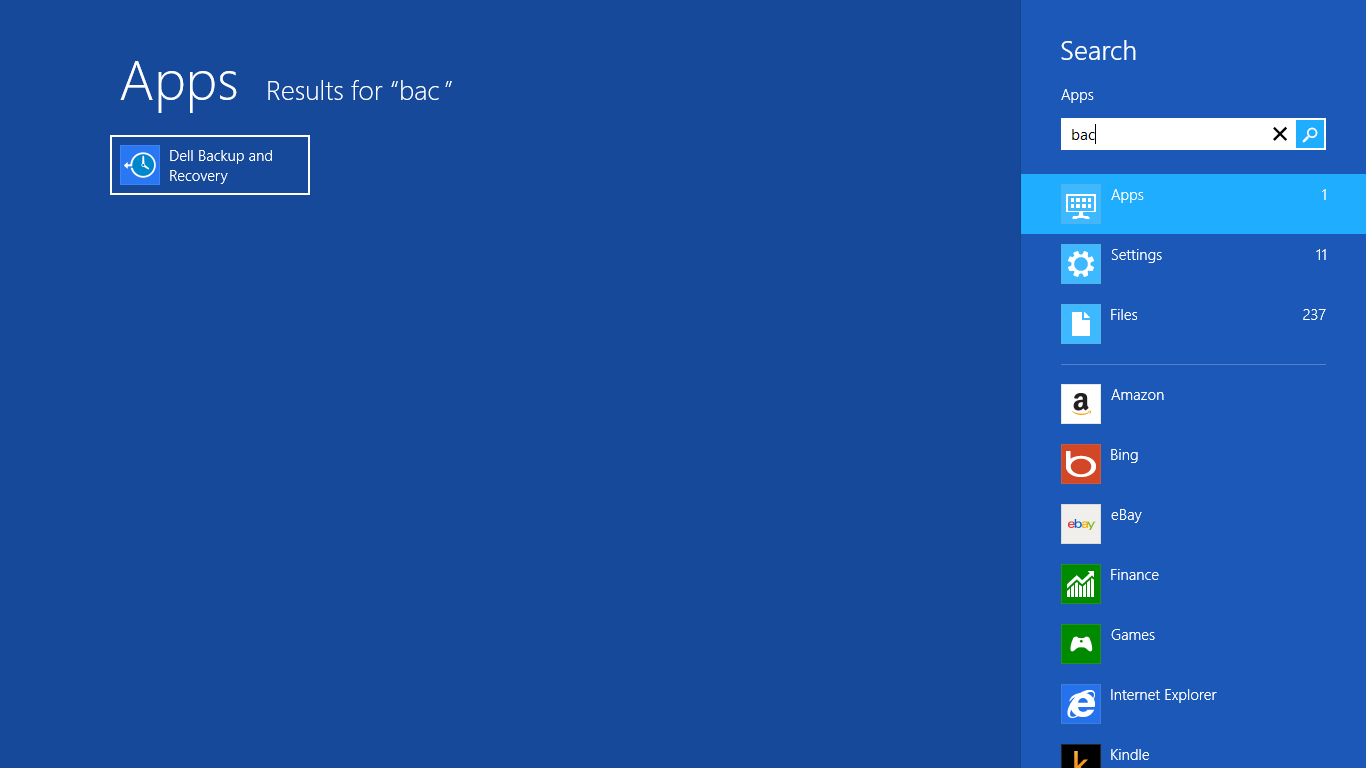
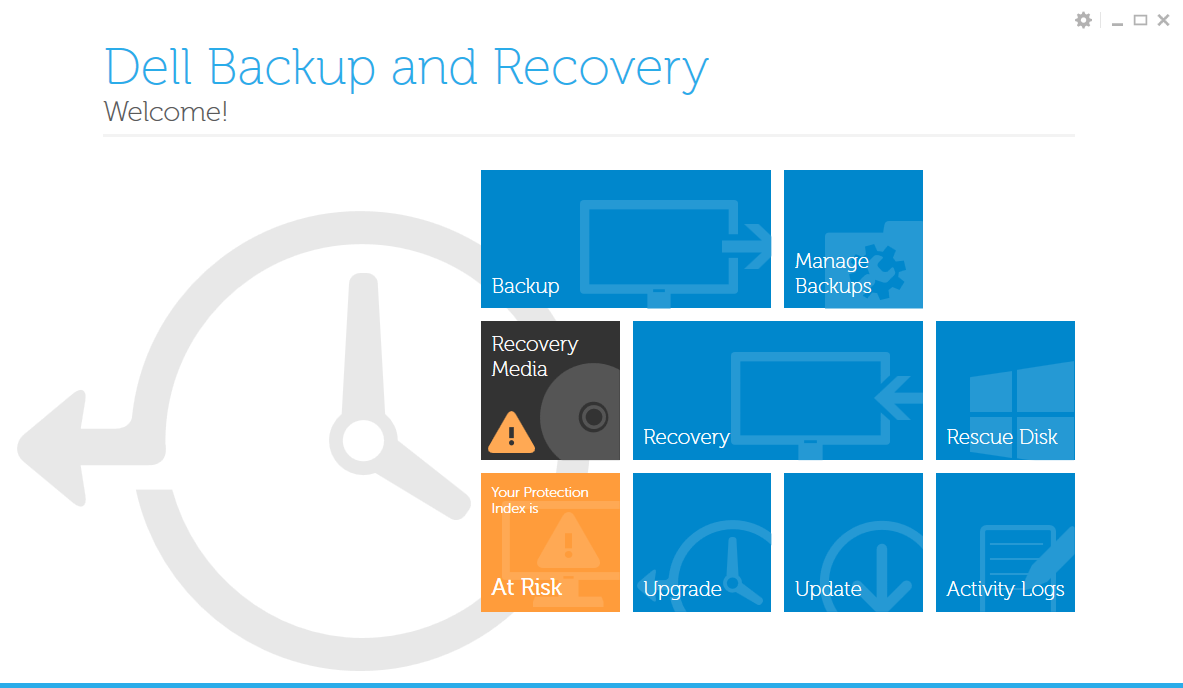

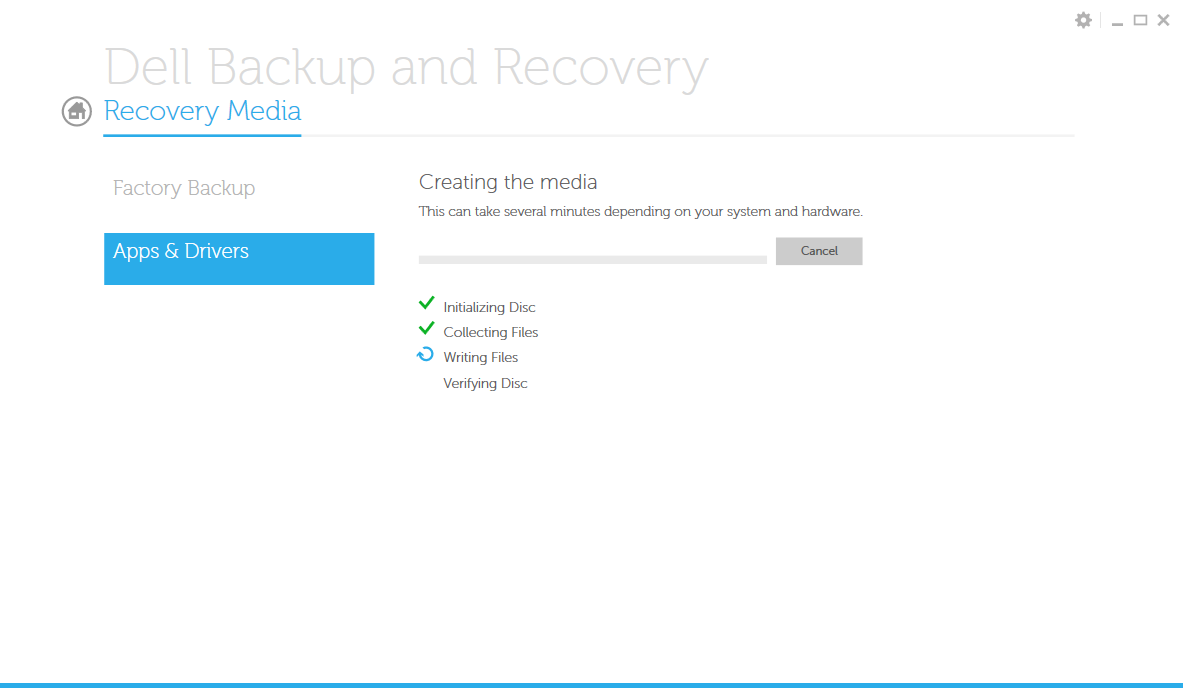
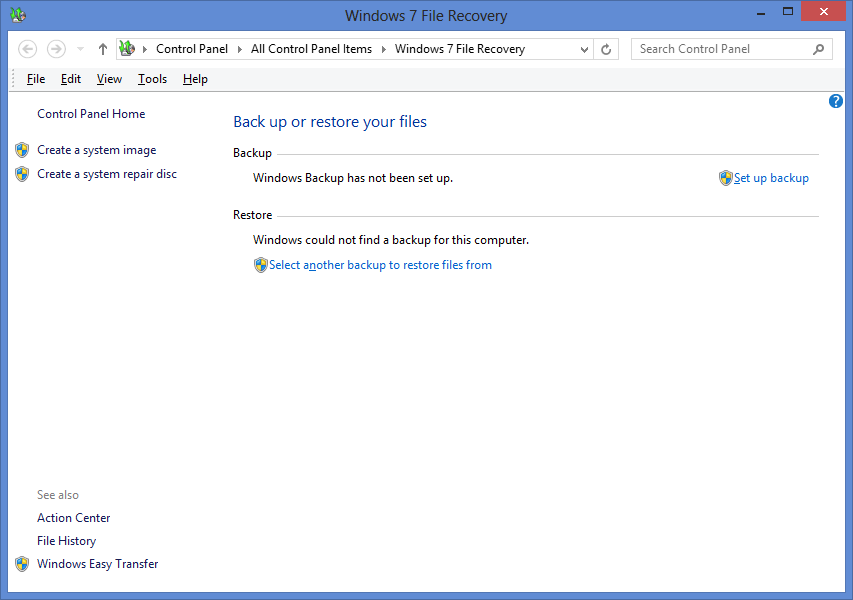
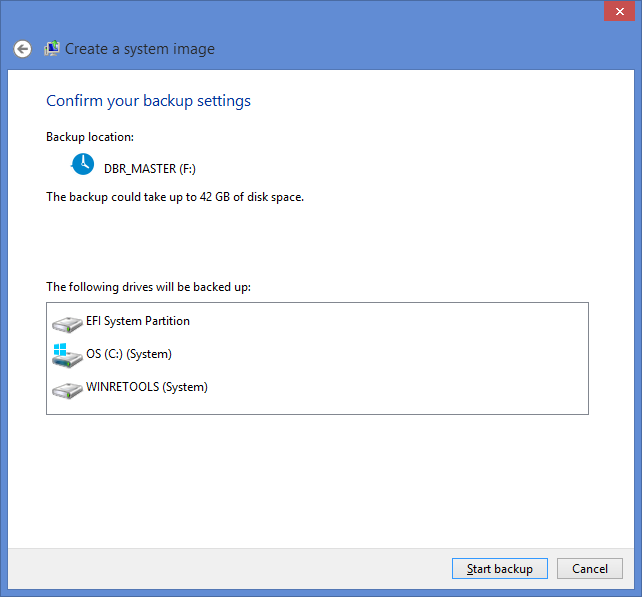
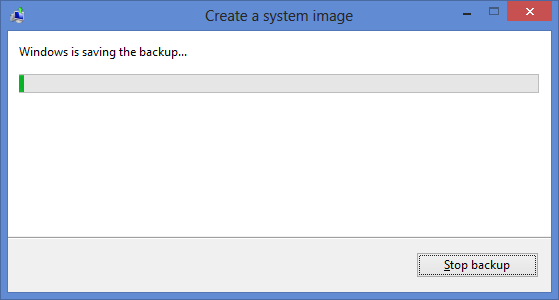
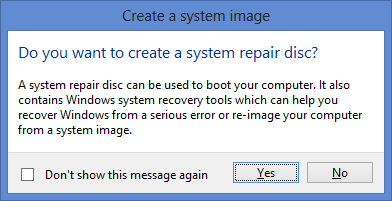

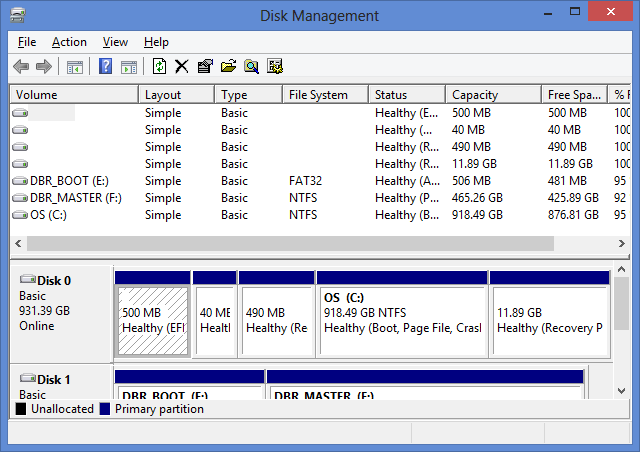
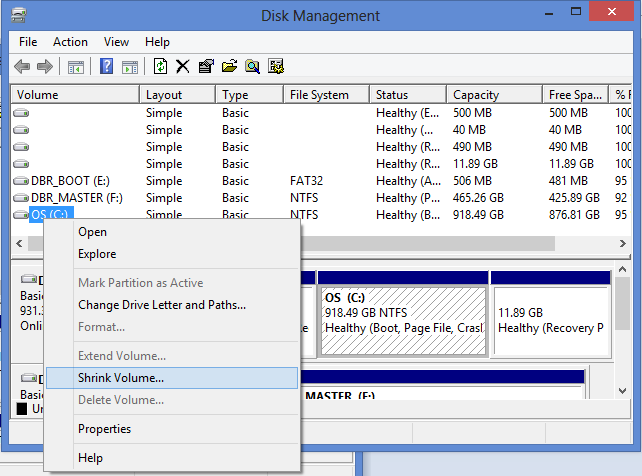
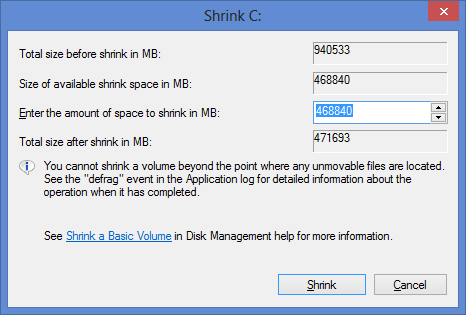
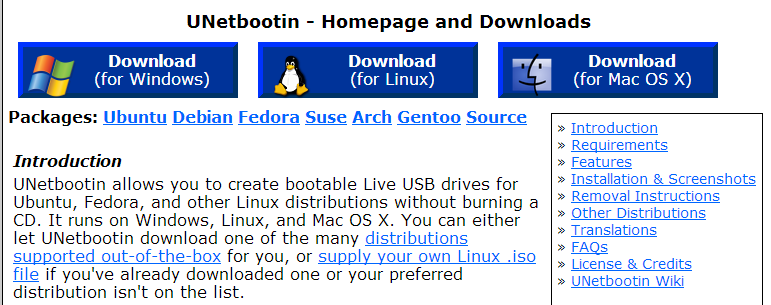
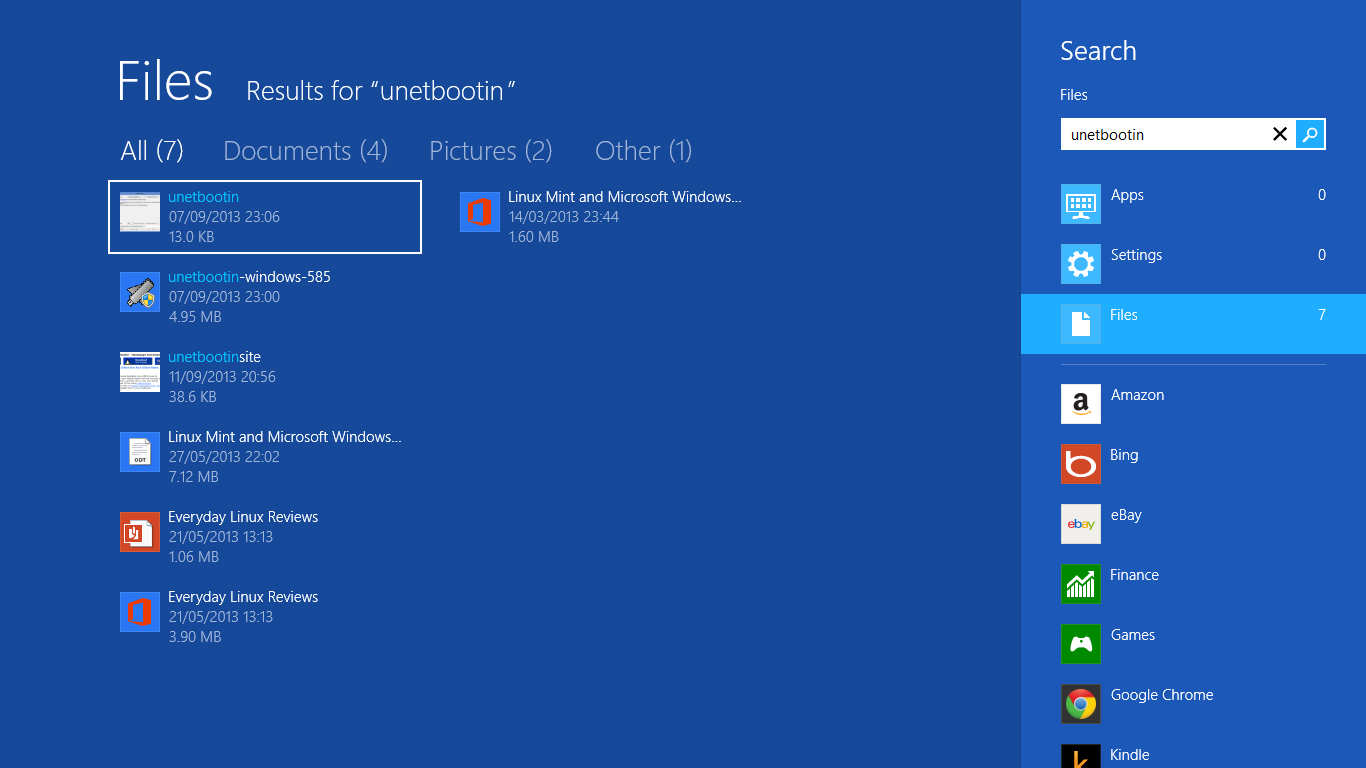
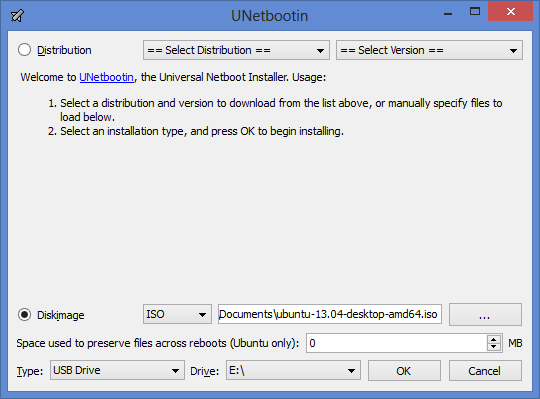
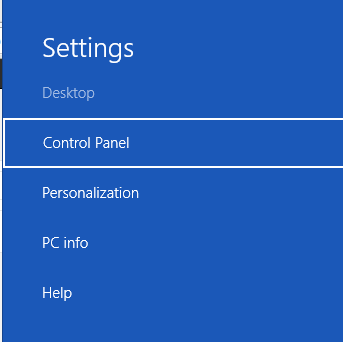

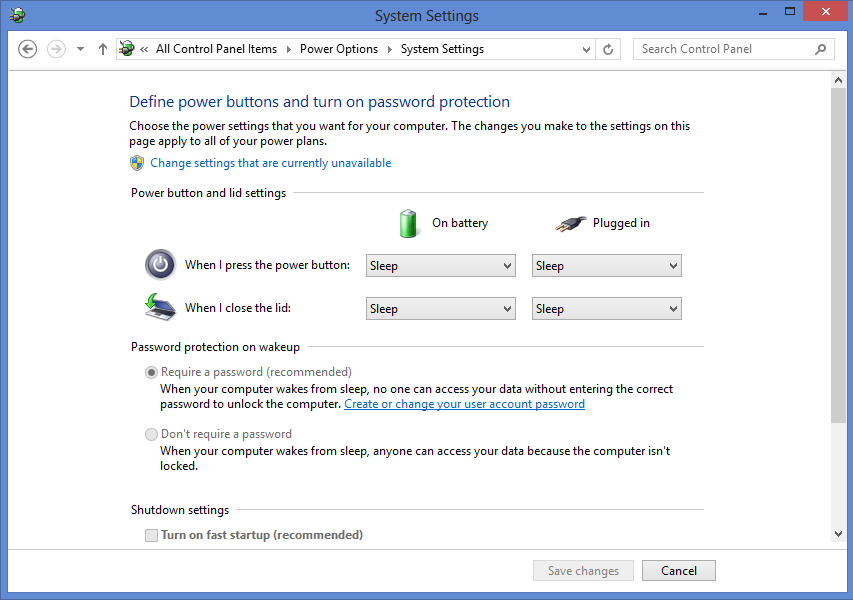
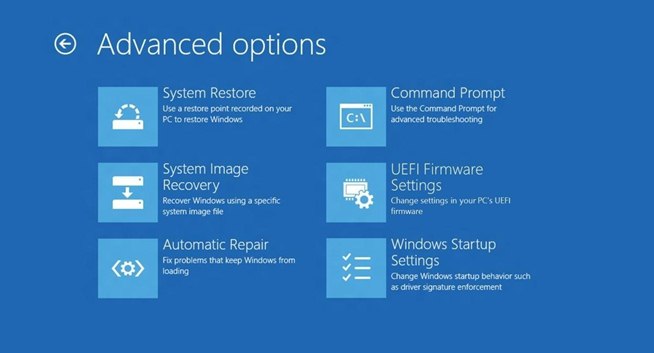
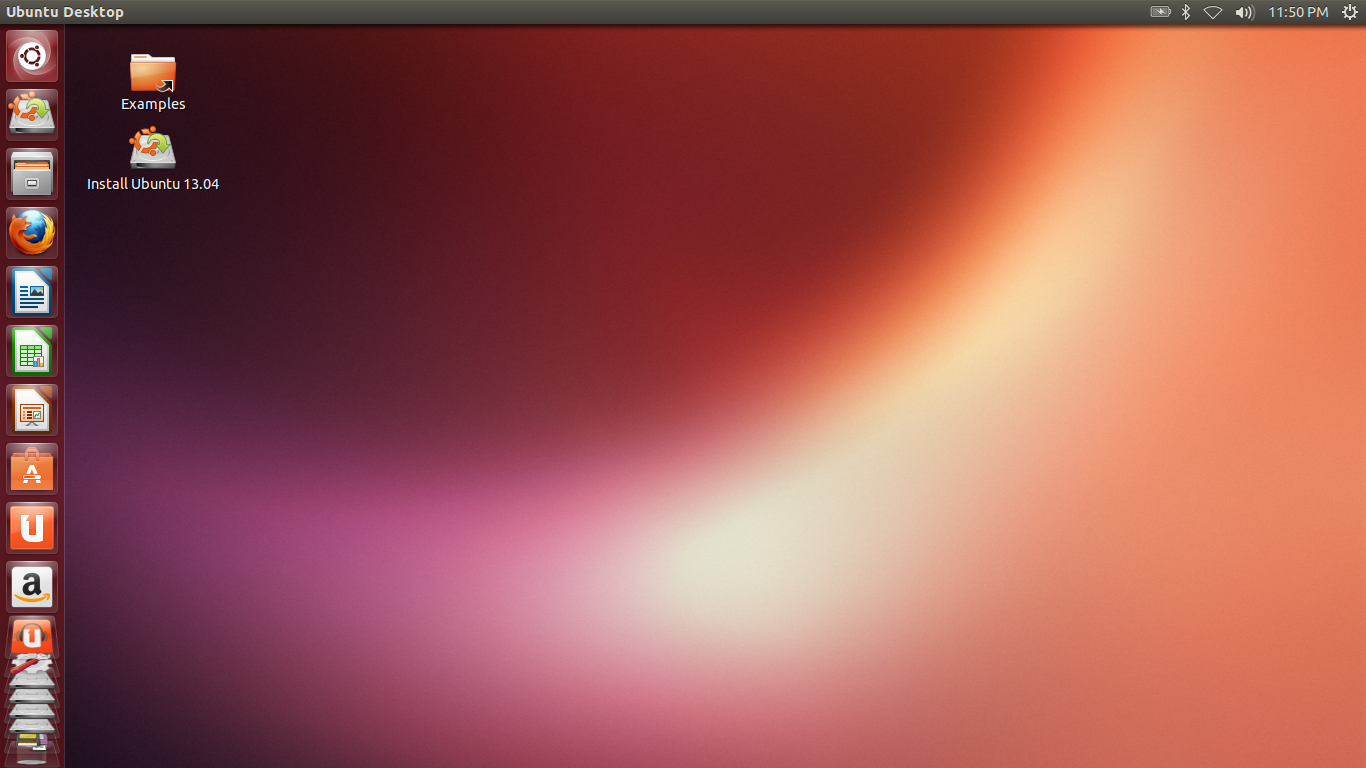
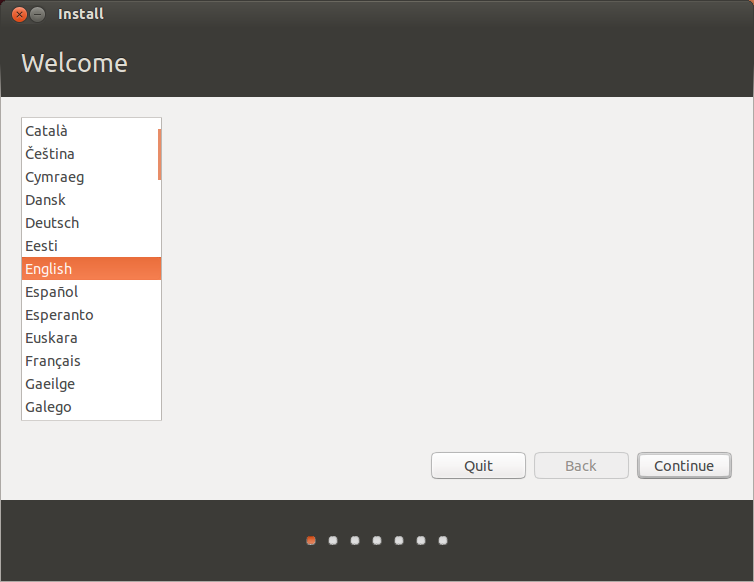
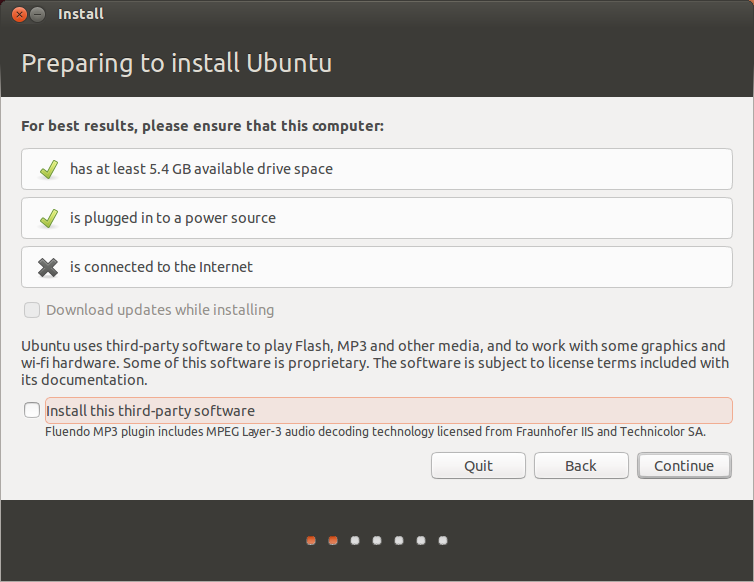
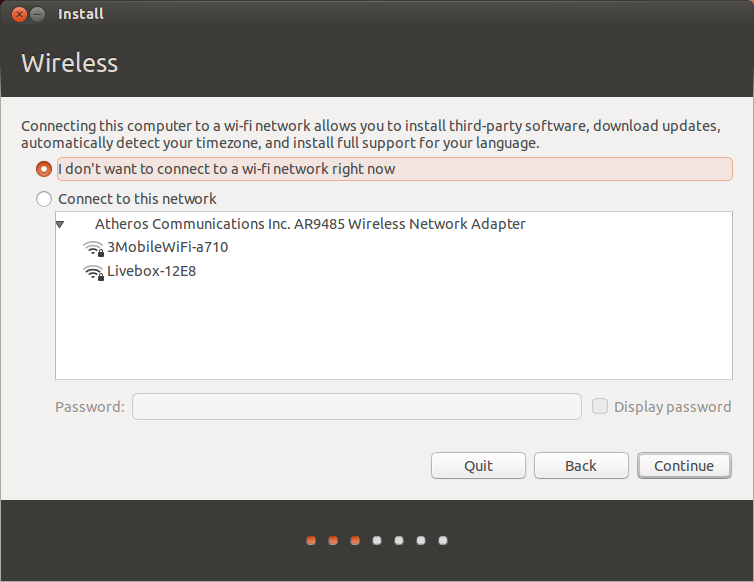


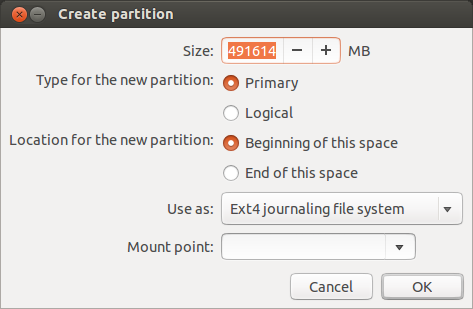
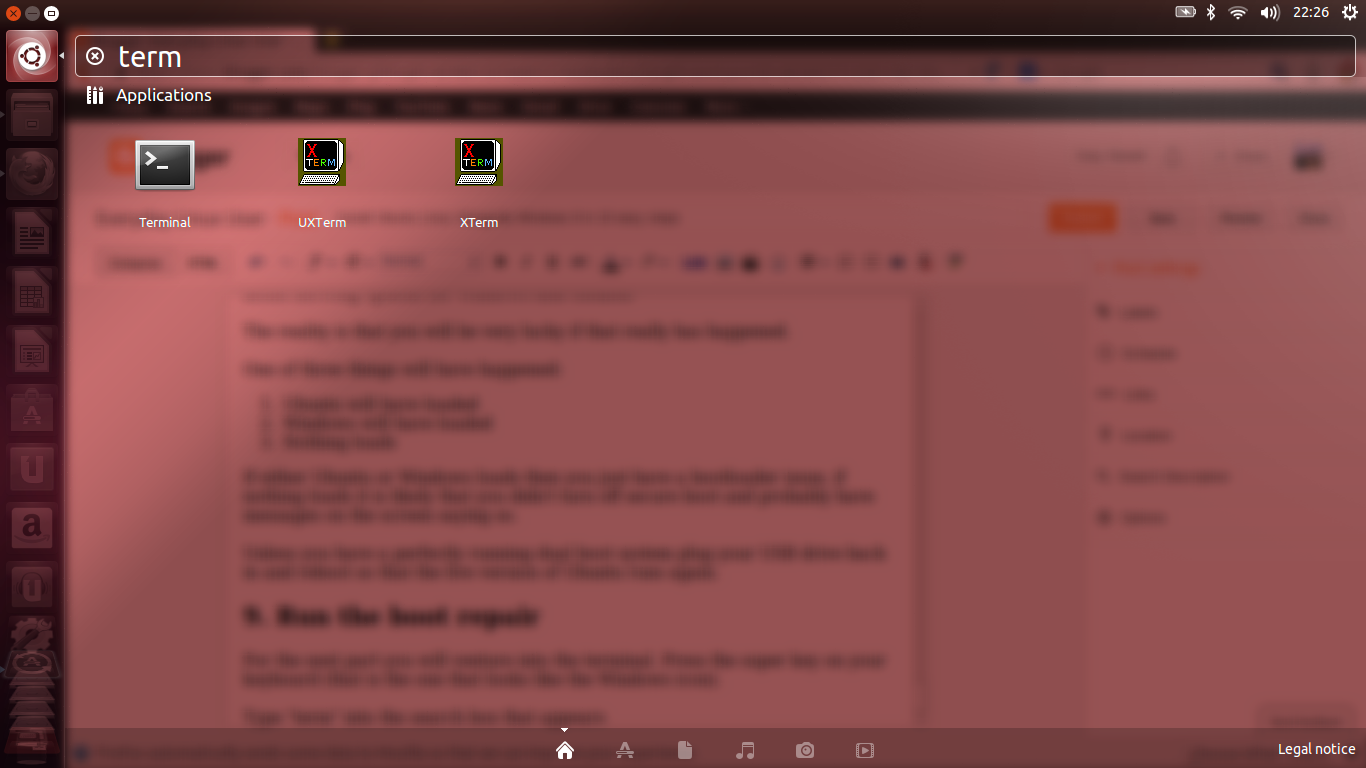
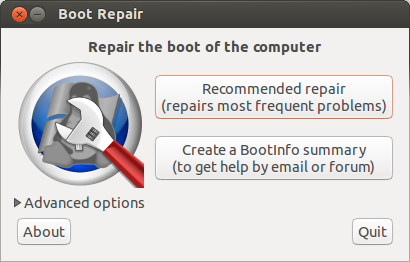


Very clearly stated, thank you for taking the time to write this! I've switched yo buying pre-installs from System76 and MintBox, since if Microsoft is going to so much trouble to devalue their hardware they clearly don't want my cash (and who am I yo insist? :-) ), but for those wanting to bypass their desperate attempts to lock in their customers, your blog is an excellent and appreciated resource.
ReplyDeletepls count me too..in your group
Delete-dipak
Looks complicated i will still with archlinux.
ReplyDeleteThis process is even more complicated with Archlinux, as you have to do the install manually.
DeleteRegardless, you'd still have to do the bit with disabling secure boot.
Of course, you could just overwrite windows!
ReplyDeleteI have installed Ubuntu alongside windows8 partition and windows7, everything works fine. I have the boot options in the boot menu, all is good:) Ubuntu Rocks!
DeleteI have a Dell inspiron 14z, when I get in the instaallation type screen I dont get the same options you got. There is no something else option for me and I cant see my partitions and neither choose one to install ubuntu, can you help me?
ReplyDeleteNo worries Thiago. Do you want to send me an email though with a screenshot or if you can tell me what you are seeing that would be great. Email everydaylinuxuser@gmail.com
DeleteGary - I don't get the same options when you hold shift + power + restart. Why? I'm using a acer computer.
DeleteThank you very much for writing this guide! I just bought my first laptop with Windows 8 preinstalled... This is the fourth time I have installed a dual boot with Windows and Ubuntu. It wasn't always this hard! But thanks to your guide I succeeded.
ReplyDeleteThis comment has been removed by the author.
ReplyDeleteWhat about this error that appears when you're going to confirm the partitioning:
ReplyDelete"the partition table format in use in your disks normally requires you to create a separate partition for boot loader code. This partition should be marked for use as "Reserved BIOS boot area" and should be at least 1MB in size. Note that this is not the same as a partition mounted on /boot. If you do not go back to the partitioning menu and correct this error, boot loader installation may fail later, although it may still be possible to install the boot loader to a partition"
???
I did create that partition. At the end there was no boot menu and Ubuntu would always boot (note: i DID turn off safe boot; that means changing bios "UEFI" to "legacy boot").
ReplyDeleteNow I ran the live Ubuntu on the usb, and Boot-Repair says:
"The boot of your PC is in Legacy mode. You may want to retry after changing it to EFI mode. Do you want to continue?"
So do I have to turn uefi boot back on or not?
Is it possible that this guide is a little bit outdated and there's actually no need to disable uefi nor safe boot to install ubuntu alongside Windows 8 any more?!?!?!?!?!?!?
ReplyDeleteHi Matteo,
DeleteIf Windows 8 was installed with EFI on then you can install Ubuntu in EFI mode and it will work but you do have to turn the secure boot element off. (this doesn't mean you have to use legacy mode, just turn off the secure boot)
Yeah, I figured that out. My bios setup wouldn't apparently let me turn off secure boot off with efi turned on. Then I found out it would let me do that if I set a password for dontknowwhat. Now the annoying thing is that almost every time I turn the computer on (_almost_, not always, that seems random) it asks me for that password before boot starts.
DeleteI've read on Askubuntu and other places out there that Ubuntu 13.04 is now supposed to work even with secure boot on, but if I turn that on again, it will refuse to boot from any OS at all.
Hi,
ReplyDeleteThank you so much for this post. While I was downloading up to step 5, I tried to reboot my computer following the directions, It shows to choose between Ubuntu/windows 8...I chose ubuntu and this error came: (windows8, dell inspiron 5412)
windows failed to start.A recent hardware or software change might be the source of the problem
insert your windows installation disc and restart your computer
choose your language settings, and then click next
click repair your computer
if you do not have this disc, contact your system administrator or computer manufacturer for assistance
file: \ubuntu\winboot\wubildr.mbr
status: 0Xc000007b
Info: the application or operation system coundnt be loaded because a required file is missing or contains erros.
I did this while the USB is plugged in.
Remove the USB drive. Log back into Windows. Select the icon to reboot Windows but hold down the shift button as you do so. When you reboot there will be an option to go into UEFI Firmware Settings. When you get in there turn off secure boot. Now when you plug in the USB drive and reboot you should be able to boot into Ubuntu. If you don't get the same options when rebooting Windows 8 then hold down the F2 key immediately when booting up the computer. This will take you into the Dell Firmware Settings where you can turn off secure boot. This only works for Dell computers, other manufacturers have their own keys for entering secure boot. Check the manual in these instances.
Deletethis is the problem i have too. i was able to turn off secure boot but still have this problem. i am using a dell inspiron 15z.
Deletecan this be done with a disc
ReplyDeleteYes it can.
DeleteI tried to install Linux on ASUS X450J laptop and it did not work!
ReplyDeleteSpecially, step 6 is completely vague. The windows I see on the Linux installation is different from yours. I tried to install several times, and I ended up my hard disk with plenty of partitions. I think steps 6 onward need more clarification for beginners. The codes in the step 9 is not working at all.
Please help me.
REgards
The partition setup is likely to be very different on each make of laptop therefore it would be difficult to do a step by step guide for the partitioning.
DeleteFeel free to send me an email by clicking the email link in the top right corner.
If you can send me a picture of the disk layout you get when you get to step 6 then I should be able to help further. The partitioning is always the bit where people new to Linux come a little bit unstuck. In Windows you always take up the whole disk so accept the defaults and if you were going for Ubuntu on its own you would do the same thing but doing it side by side it a bit more involved.
This... sounds... AWESOME!
DeleteBeen pulling my hair out and smashing things ever since I bought a new laptop with win 8. However, I kinda want to play with Win8 some more; it does have potential I guess. In the meantime, I'd like to use an OS that wasn't designed by engineers who were apparently tripping on bad acid during the design phase.
I'm very new to linux as well, but I loved playing around with Mint on my gaming laptop. So fast. However, even after a few days I started getting tired of problems/ linux help forums etc.
Gary you present the option for the middle path. Thanks!
Question: would the above procedure work the same for a Win7 USB install? I have a stick thats good to go.
How about Linux Mint?
I wont tackle this project until the weekend. Computer problems are both lame and addicting. Thanks for the well timed (for me) post Gary!
Hi Andrew,
DeleteYes this would work on Windows 7 although it might be even easier depending on your computer. If your machine is not UEFI enabled then you don't have to worry about the secure boot bit. I would still recommend using the Windows 7 recovery tools for creating a recovery disk and a system image
Hi, are the procedures of installing kubuntu 12.04 same as the steps stated above? Thanks for help
ReplyDeletewhy i cannot enter the boot menu? actually i have skipped step 1 and 2 because i just want to try to the usb stick but it go straight to window 8 without go to boot menu. I have disabled the secure boot and turn off fast boot. can you explain the possible reasons of this problem.. thank you.
ReplyDeleteVarious possibilities depending on the manufacturer. It could be that the USB drive is lower in the boot order than the hard drive. Go back into your bios settings and look for the boot order of devices. Make the USB drive higher than the hard drive.
DeleteTake a bow !
ReplyDeleteI spent hours reading about UEFI and secure boot and was really really skeptical about moving ahead. However your precise instructions boosted my confidence and i have successfully dual booted my lenovo g500s :-) I could boot live usb with secure boot enabled however had to disable it during boot repair. Other than that some funky behavior that i was able to track down pretty quickly. Ubuntu 12.04.3 feels nice with a decent processor i5-3330m and 8gb ram... Beautiful... Thanks again !
I have a toshiba satellite laptop and following thee instructions - I cannot boot from install dvd the way it instructs. It tells me there is no cd option to boot from. Instead, I went to BIOS and changed boot from UEFI to CSM and that works.
ReplyDeleteUnfortunately though, unless somebody has a way around this - I have to manually switch between UEFI and CSM depending on what OS I would like to run.
Is this the same for anyone else?
i just installed Ubuntu 13.10 64bit dual booted on my new Toshiba Satellite C55-A5302 with win 8. I was able to install with UEFI on (turn secure boot off) and change the boot order to usb/cd 1st and then HDD. Also make sure the image you burned is the 64 bit version. 32bit WILL NOT WORK. also turn off fast boot in the control panel. -- it's booting fine with both systems & did not have to run boot repair. I actually installed off the USB since thruput is higher than a DVD & left secureboot & UEFI on until after install completed & got to grub 2 menu. then turned off secure boot when got an error trying to boot to win 8.
DeleteThanks for sharing this article...
ReplyDeleteI can't continue to install because the format checkbox of swap partition did not check. I don't know why this happened? Can somebody help me out this issue? Thank you very much!
ReplyDeleteMine didn't either. I plowed forth, and Ubuntu seemed to install and runs just fine. I am, however, having an issue with the boot loader, as outlined in my comment below. Hope this helps.
DeleteThere is no option for swap to be checked to format, which is fine. So only first two partitions are checkable. As far as for boot loading, please see my observations below if that is any help to you!
DeleteThanks
Virendra Singh
First off, thanks a ton for sharing this! This message is coming to you from Saucy, which I'm really enjoying.
ReplyDeleteI'm having an issue with the dual boot, and was hoping you could give me some insights. I followed your instructions to the T (I think), and it looked like things worked. I get the option to choose Ubuntu or Windows 8 UEFI upon install. If I choose Ubuntu, things work great. I shut down and get the boot option again, Ubuntu or Windows.
However, if I select windows, when I shut down, it automatically boots back into Windows with no option to choose the system. I've run the Ubuntu Boot Repair tool numerous times to no avail. The only way to get back into Ubuntu after booting to windows is run Ubuntu from the USB, then run Boot Repair, then reboot and choose Ubuntu.
Do you have any idea what could be going on? Here's my boot-repair output http://paste.ubuntu.com/6350849/
Thanks again!
I always had dual boot i.e. Windows XP and Ubuntu, however now I have my new laptop with Windows 8 and I had no clue how to make it dual boot. Also, with so much googling I was not able to find clear instructions to get it either. I tried google again and I came across your instructions, gathered some courage and this weekend I followed your instructions, had some minor issues, however finally I was able to make it a dual boot. I can't express enough thank you that your instrcutions are very helpful and appreciate your efforts to help out people on this!!!
ReplyDeleteThanks
Virendra Singh
One issue worth mentioning, that after following the instructions after BootRepair etc., when I rebooted the laptop, it was going into Windows boot without any option. So I went to BIOS again under UEFI boot options, these were the options:
Delete1) Windows Boot Loader
2) Linux Boot Loader
3) DVD Device
So I made the Linux boot loader on top i.e. changing the order with F5 and F6 keys, then F10 Exit and Save, and my mission was completely successful :)
-Virendra Singh
Hi Virendra which dell laptop are you using?
DeleteHave you created the factory recovery? Can yoou please confirm if you have any idea about using the recovery, as per my knowledge it will delete the entire hard disk.
Can I get the window 8 os alone from DEll???
So that I dont have to use factory reovery.
I have Dell laptop Inspiron 7520, I7 Processor, 8GB RAM 750GB Disk.
DeleteYes, I took recovery first, which were in DVDs and took more than an hour, and NO it did not erase anything otherwise what is the meaning of system backup. When I purchased it from Dell it had only Windows 8 and single partition C: drive. I have a habit to create the data partition separate so I shrunk C: to 374GB, this is how much it allowed me and rest became E: drive (ntfs). So when I decided to install Ubuntu I shrunk E: drive to 152 GB (ntfs) and rest now third partition was unallocated. Then took recovery disks, copied ubuntu 12.04LTS image to a DVD (and not USB). Booted from DVD, followed instructions, created 50GB root partition, 140 GB home partition and remaining 20GB as swap, and rest were the instructions!
Thanks
Virendra
This comment has been removed by the author.
DeleteHi Virendra
DeleteThanks for your reply.
But when you use the recovery then that will bring your hard disk back to the original , meaning it will format the E drive too. This is what Dell Customer care told me.
Moreover I have created the partition before taking the factory recovery. So I am in doubt if my recovery will work or not?
Hi!
ReplyDeleteFirst of all thanks for this great post.
I have one question, and this is related with dell only.
I have used "dell backup and recovery utility" for creating creating the factory recovery.
Created a partitions and will install linux next.
While having talks with dell customer support, they if I use the factory recovery then It will format my entire hard disk, delete all the partitions.
Since I have created another partition to keep my personal data(Music, pictures, movies etc).
Can you please suggest a way to use recovery without deleting the other partitions (non- os one)??
Thanks a lot in advance :)
thank you for writing this important blogs,
ReplyDeleteit help me in understanding about installation !
how to do in windows 7, my windows 7 not detected by ubuntu 12.10
ReplyDeleteIn theory installing Ubuntu alongside Windows 7 is relatively straight forward. I will write a guide shortly.
DeleteIn the meantime the instructions are to:
1. Backup your windows 7 using the windows 7 recovery tools
2. Shrink your C drive (or drive that contains windows)
3. Download Ubuntu
4. Download Unetbootin
5. Run Unetbootin and plug in a USB drive
6. Using Unetbootin copy Ubuntu to the USB drive
7. Reboot your computer with the USB drive still in.
8. When Ubuntu loads run the installer
9. Follow the on screen instructions to choose language, keyboard layout etc.
10. At the partitioning bit choose something else and in the blank space create an extended partition with 3 logical partitions. 1st one is / and is 20gb, 2nd is home and is the rest of the empty space minus say 8gb for the 3rd partition which is swap
11. When installing grub choose /dev/sda (not /dev/sda1 etc).
12. Finish the install and create your user etc
13. Reboot.
You should have an option for Ubuntu and Windows.
It worked!After trying on my own for hours,i followed your instructions to the letter and did it on my first try,thank you!
ReplyDeleteThanks for the feedback. I know some people have followed the guide and had success and that there are a few that have issues. This is down to either the guide not being clear enough or the hardware reacting slightly differently.
DeleteFirst of all, thank you for your helpful tutorial.
ReplyDeleteMaybe I did not understand everything since I am quite a newbie, but... Windows 8 is always keeping >400GB? Is there no way to have Ubuntu with, say, ~700GB and Windows 8 with ~200GB??
Bernat
It depends how much space is taken by the Windows partition to start with. If after shrinking your Windows partition it leaves Windows with 400gb then Windows must need that. If you have files on the Windows partition such as music, videos, photos etc consider copying them off and then shrinking the drive to free up more space. Then copy them over to the Ubuntu partition.
DeleteThanks a lot for your tutorial. I had an additional problem at the stage of installing Ubuntu whilst running the live Ubuntu flashdrive. My screen (on my HP laptop) went blank - but I could just make out that when viewed with optimal light and angle that there was still a screen display but with the intensity turned down to virtually zero. I plugged an accessory monitor into the VGA port and got a display of normal intensity & was able to continue with the installation.
ReplyDeleteIt feels awesome to read such informative and unique articles on your websites I like the way you have presented the topic. Very elaborated and well defined.
ReplyDeleteYou rock! I followed this guide step by step and now have a working dual-boot (Ubuntu 13.10 and Windows 8.1). Excellent guide! Thank you for spending the time to put it together.
ReplyDeleteThanks for the response.
Deletethx...
ReplyDeleteHi! I have a dell inspiron 7520 with activated win 8, but i don't get the "uefi settings" option when i enter the panel! What shoud i do?
ReplyDeleteboot-repair shows "winEFI found Do you want to activate[...]?" .
ReplyDeleteshould i click yes or no?
When running boot repair I tend to trust the recommendations and click yes. This is why I recommend backups first though.
DeleteHi Ive done everuthing you set out in the instructions, however when I restart with the USB with Ubuntu on it, I get a message saying "will automatically boot in 10 secs and it starts a count down, however when it gets to 1sec it just starts again at 10secs and keeps doing this. There is a box above this dialog which says default.
ReplyDeleteAny ideas? Anyone?
What happens when you select Default?
DeleteThank You so much,man....
ReplyDeleteYou've helped me finally dual boot with windows 8....I was trying from so long time....
Thanks a ton!
at the point to install the linux bootloader on /dev/sda it gives me an error and I cant install the boot loader, what to do? Pls help, I really need ubuntu :(
ReplyDeleteHi Dennis, sorry for the delay in answering your question.
DeleteCan you tell me what the error is that your are getting?
Just followed your guide , did the boot repair , and now have Ubuntu running alongside Windows 8 . Thank you so much !!! :)
ReplyDeleteThanks for the feedback Gary.
DeleteHello,
ReplyDeleteDo u have to the partition before hand or can you do it in the installer?
That is the bit which im struggling with.
Thank you
Brendan
You need to have space available for the partition which is achieved by following the section on shrinking you Windows partition. The actual creation of partitions can be done using the Ubuntu installer.
DeleteHow do you remove ubuntu from the laptop to have it just windows 8?
ReplyDeleteI have never tried this but if you follow this link it looks fairly promising http://www.sevenforums.com/tutorials/210983-dual-boot-delete-os.html
DeleteDo you have to shrink the w8 partition before hand?
ReplyDeleteBrendan
You need some unpartitioned space on your drive to be able to install alongside. Generally Windows is set up to take up the whole disk so the only way to get some unpartitioned space is to shrink the windows partition
DeleteAfter trying twice on my own and having to revert to factory settings on my Toshiba Satellite (Windows 8 preinstalled, no disk), I found your site. Your instructions worked like a charm on the first try. I can't thank you enough for taking the time to write this!
ReplyDeleteExcellent. Thanks for letting me know
DeleteFirst of all thanks for such a great tutorial. Seems that Windows 8 didnt want to share the computer with any other OS.
ReplyDeleteThe installation was done in a Toshiba Satellite C50. I installed Ubuntu 12.04 64 bit version using a bootable usb drive.
The first attempt failed on step 7, saying that it was an error installing GRUB. Then I tried again but this time in step 5 I connected (by cable) to internet and let the updates go. The problem was solved!!!
In rebooting it was no sign from windows 8 (I could have leave it like this :) ). Then I went to boot repair and worked flawlessly as described!!
Ubuntu ROCKS!!!
When I turn off EFI, I cannot boot into W8 anymore; I get a msg like "No operating system found".
ReplyDeleteAnyone else run into this?
Did you switch to legacy mode? This would cause that error. You only have to turn off secure boot and not switch to legacy mode.
DeleteSeems like the Windows 8 on my laptop has gotten completely wiped off. The backup on my external seems to be corrupted as well. Please guide... lol
ReplyDeleteIt probably hasn't been wiped unless you chose to overwrite one of the Windows partitions. It might be the case that you switched from EFI to legacy mode. If that is the case try switching back to EFI mode. Other options include running boot repair from within Ubuntu or inserting the Windows rescue disk and see what that finds.
DeleteThanks a lot for this detailed step-by-step guide.
ReplyDeleteMy problem is as follows: When I boot from the USB, I get the following error:
incompatible license
Aborted. Press any key to exit.
PLEASE HELP!
I have ubuntu 12.04.3 64bit and my laptop is dell e7440 windows 8.
Many Thanks!
NeedLinux
Have you turned off secure boot?
DeleteTHANKSS
ReplyDeletei have just about given up. i got close. but never got there in the end. i have a feeling windows 8 and ubuntu co-installed won't work or is really difficult to achieve.
ReplyDeleteThe introduction of UEFI hasn't made it as easy as it used to be but it is possible. I have Ubuntu and Kubuntu dual booting (or triple booting) with Windows 8
DeleteYes, it worked! Thank you so much -- I read a bunch of other guides but yours was the only one with the *right* level of detail.
ReplyDeleteOnly things that I got caught up on was:
-Why I needed to create a /home partition, and how big it should be. After reading some other threads on this topic, it looks like this partition is no longer necessary, so I didn't create it
-Whether the swap partition should be primary or logical, since you didn't specify. It looks like either is fine, and I went with logical.
For everyone else, I can't emphasize how important turning off secure boot is, and using the latest version of Ubuntu (13.10) -- I think this simplifies a lot of installation steps.
The only *outstanding* question I have is whether I can re-enable fast boot and secure boot. For secure boot, I think the answer is no... but what about fast boot?
Thanks again Gary!
Hi
DeleteHave you re-enabled fast boot? cheers!
Thanks a lot for this detailed article. I was fed up with windows 8 and wanted ubuntu back very badly. Now I have installed it successfully alongside windows.
ReplyDeleteThanks, it worked.
ReplyDeleteNot immediately thou. I had to repeat step 9 and select both of my partitions, because the boot loader didn't recognize windows immediately.
Anyway, great guide. Thanks again for writing it!
This comment has been removed by the author.
ReplyDeleteShould I Shrink the partition C (where the current windows 8 os is) exactly? Can't I use another partition to install Ubuntu? Because I cannot shrink my C partition where the current Windows 8 installation is existing. Error shows when I try to shrink that partition.
ReplyDeleteThank you Gary Newell for all your efforts. But i have a few questions.Please try to answer them.
ReplyDelete1) Why do we need to create a 50 GB root partition? Can i reduce its size?
2)The second partition (whose size you said should be "free space - size of swap space") is not accessible when using Windows 8. I am newbie and basically use Windows. I need that space to be available in Windows.
3)After installation do you enable the fast boot and secure boot options?
ps; I installed Ubuntu just to experiment with it and for now do most of my work on Windows
Hi Sashank
DeleteThe answers are as follows
1. After shrinking Windows partition you should have some free space. 50 GB is an arbitrary amount of space which should more than suffice for the installation of Ubuntu. You can get away with a lot less such as 20 GB.
2. After shrinking the Windows partition you should have free space. After allocating 50 GB to the Ubuntu root partition (step 1) then you should have space left from that free space. Use the rest of that free space but leave some for swap.
3. Do not re-enable fast boot or secure boot.
If you are just experimenting with Ubuntu I would recommend using a virtual machine. Try using Oracle Virtualbox for this.
Hi Gary Newell,
ReplyDeleteI am trying to dual boot Lenovo Z510(which came with windows 8) with ubuntu. I tried to diable secured boot. This is what i see
Secure Boot [Disabled]
Secure Boot Status Enabled
Platform Mode User Mode
Secure Boot Mode Standard
Is the secure boot really disabled?
If you can boot into Ubuntu's live version then it is disabled
DeleteExcellent write-up. By following these instructions (to the letter) I was able to set up Ubuntu 13.10 to dual boot alongside Windows 8.1 on my new Razer Blade Pro without a single hitch, in stark contrast to the tales-of-woe I have read elsewhere.
ReplyDeleteThanks!
You, sir, are awesome. I would not have been able to install Ubuntu without this guide. Thank you!
ReplyDeleteHello Gary,
ReplyDeleteThank you so much for the excellent tutorial. I am trying to install Ubuntu 13.10 on my Toshiba E45t-A4300 laptop running Windows 8.1. After booting from Live USB, during the installation process, it does not take me into the screen with the options like "Erase disk and install Ubuntu", "Something else" etc . Instead, it takes me directly into the "Installation type" window which displays the Device, Type, Partition Tables etc. However, it does not list any of the disk devices, as you can see from the screenshot here: http://snag.gy/f9IHp.jpg
I tried to run gparted, but it gives me the error "The backup GPT table is not at the end of the disk, as it should be. This might mean that another operating system believes the disk is smaller. Fix, by moving the backup to the end (and removing the old backup)?". I just cancelled this operation, as I am not sure.
As per instructions, I had turned off "Fast Startup" in Windows, and have also disabled "Secure Boot" in UEFI settings. I even changed the "Boot Mode" from "UEFI Boot" to "CSM Boot", but to no avail. I shrunk the C: drive as per instructions, here is the screenshot after shrinking it: http://snag.gy/6hd2i.jpg
Thanks for your help !
Hi Venkat,
DeleteIt looks like gparted thinks you have no disks in your drive but you clearly have 2 and there is enough unpartitioned space to install.
Could this link here help solve your issue? http://askubuntu.com/questions/236644/how-do-i-install-ubuntu-12-10-if-gparted-detects-no-drive-western-digital-sata
Thanks for this. What a really thorough and well done article. You win the internet for today.
ReplyDeletei do not get 3 ticks.. in swap area i m not getting tick.. what could be the problem??
ReplyDeleteI followed all of the steps, creating a USB drive to boot from, disabling secure boot etc, but when I try to boot from the drive the computer turns on, flashes the Toshiba Logo, then the screen goes black and back to the Toshiba Logo. It flashes like this until I turn it off. Could this have to do with the fact that I am using a USB 3.0 drive?
ReplyDeleteIt is certainly worth trying another drive to see if that is the problem.
DeleteI had the same problem and turned out to be an uncompatibility of ubuntu with the graphic card with a very easy solution (editing the screen options before installing ubuntu, using "e" in GRUB). In any case, this link explains how to solve this and other issues causing black screen while loading ubuntu:
Deletehttp://askubuntu.com/questions/162075/my-computer-boots-to-a-black-screen-what-options-do-i-have-to-fix-it/162076#162076
The "swap" space isn't checked and I can't seem to check it. Is this okay? How can I fix it?
ReplyDeleteI think that is fine. It is only used as memory overrun if you run out whilst running a big program.
DeleteI agree. But i would feel a whole lot better if i had the swap space. Do you know any reason why i wouldnt be able to check it off?
DeleteThanks for the guide! It almost worked..:P Before doing the boot-repair in step in step 9, windows booted when I turned on the computer. After the boot-repair however, neither Linux or Windows boots, I simple get stranded in the BIOS.
ReplyDeleteI installed Linux Mint, not Ubuntu. Does that change anything? Im completely new to linux
Linux Mint isn't the same as Ubuntu with regards to dual booting with Windows 8. Linux Mint has to be installed in legacy mode I believe.
DeleteThanks for the answer!
DeleteIf I now follow the guide, with an Ubuntu live usb and install Ubuntu on the partitions I made for linux mint, do you think that will work? Or am I screwed and should just try to restore windows?
Sorry for the late reply. That should work. Actually I am also led to believe that Mint 16 works correctly with EFI so you won't need to switch to legacy mode. If you wanted to continue trying Mint that is
DeleteOkay so I finished the installation but when i restarted my computer ubuntu loads. When I try to access the BIOS to boot on the live ubuntu on my USB an error message quickly flashes and ubuntu loads again. I am using an Inspiron 3520. thanks for any help i can get.
ReplyDeleteSo the problem is that you don't get the menu which lets you choose Windows or Ubuntu, is that correct? If so then whilst in Ubuntu follow the same instructions for running the boot repair (as if you had booted from the live USB).
DeleteWill the process be the same if I try to install the 12.04 version of Ubuntu on a Dell Inspiron 15 laptop? Or are there different steps involved?
ReplyDeleteThe process should be the same.
Deletehi, i formated my whole hard disc and installed ubuntu 13.10. i made 2 partitions ext 4 one of mount type ' / ' and other ' /home '
ReplyDeletenow when i use windows 8 dvd to install, it gives error and does not install...
kindly help me how to reinstall ubuntu, so that after that i could install windows 8
or simply help me install windows 8
i am new to this, kindly explain by steps....thanking you
When dual booting Windows 8 and Ubuntu you should install Windows first and then Ubuntu. What error are you getting from the DVD?
DeleteI'm trying out Ubuntu 13.10 from a live dvd on my Dell laptop . The trouble is it can't see my WiFi. I have a Broadcom network card. What should I do?
ReplyDeleteTry opening the Dash (press the Windows key on the keyboard) and search for "software". When a "Software and Updates" icon appears click on it. Now go to the additional drivers tab. Is there an additional driver listed for your Broadcom card. If so install it.
DeleteThank you very much for the article.
ReplyDeleteThe article is great, thanks man! However, I'm kinda stuck in the step 6 (don't wanna take any risk). I am an absolute ignorant of informatics and a newcomer of ubuntu, would you mind to further explain how coud I recognise the unpartitioned space, please? Besides, in my interface the option of deciding between primary or logical type does not appear, how would that affect the process?
ReplyDeleteThanks in advance.
Roberto
Thanks from Spain man!!!! It really helped me.
ReplyDeleteGreat work!
ReplyDelete2 things I had to work around:
1) Some USB thumbdrives will not boot...my first cheap one didn't and I spent a lot of time thinking it was the UEFI issue.
2) My older Gateway LT27 Netbook doesn't have UEFI nor does it have BIOS accessible Secure Boot options. I found I just had to move the USB storage boot option above the harddrive boot option.
Thanks for sharing Shawn.
DeleteWell, finally (after a little conflict because of the NDIVIA drivers) got both OS installed and working thanks to this tutorialu. Thanks again, man, you rock!
ReplyDeleteRoberto.
Glad you got it working Roberto
DeleteI'm getting the following error while installing ubuntu installer(ubuntu 12.10).
ReplyDeletegiving the following error,
"An error occurred:
permission denied."
i turned off both fast boot and secure tool.
please help me out :(
How far into the install have you managed to get? Is it right at the beginning whilst running the installer or half way through?
DeleteWhen I am doing this .at step 7 installing grub 2 i get error message and crash the installation any help pls? (Dell Vostro )
ReplyDeletecan you give more information as to the error message that is displayed?
DeleteHello Sir !
ReplyDeleteI followed your instructions and now I am able to dual boot ubuntu and windows 8, but unfortunately with some problems.
1- Every time I boot I see an error "efidisk read error"
2-When ubuntu starts it shows first a black screen with a number of errors.
3-When I open ubuntu and after shutting it down I open widows, there a problem with windows:
It shows the date of a day ago and when I open chrome it says that chrome had crashed and asks if I want to restore tabs, while in reality it was closed without problems.
4- Boot menu has the following options:
ubuntu generic
ubuntu generic recovery
previous linux versions
windows uefi bkpbootmgfw.efi
windows boot uefi loader
efi/lenovo/boot/bootmgfw.efi
windows 8 loader (loader)
system setup
I use the third option to boot windows. Is it normal to have so many options ?
5- Also I made an error when installing ubuntu:
The first time I used the Install alogside windows option, and then I installed it again following your instructions. Now I have 2 swap partitions.
Any idea how I can resolve these issues ? What can I do about the version of ubuntu I installed using the "install alongside windows 8 " option ? How can I remove it ?
Thanks in advance.
Clay
When you reinstalled Ubuntu did you overwrite the Ubuntu you used the first time when installing alongside or did you create new partitions? I think you have so many options because you have installed twice. The "previous linux versions" link probably shows you more Linux options. You can try the boot repair utility again to see if that fixes your Windows/Ubuntu issues. To be honest in your situation I would be considering restoring from your backups and starting again otherwise there is a lot of partitioning work ahead.
DeleteJust a thought.Suppose I use 32GB space for Linux, how is this space described by windows in its memory ? main concern is whether windows can manipulate this 32GB memory ?
ReplyDeleteIt doesn't. The 32 GB is disk space and will only be used when you boot into Linux.
DeleteThank you Gary for your contribution, to have something else than Windows/Apple , I really feel free just to try Ubuntu!
ReplyDeleteI had some issues trying to install Ubuntu in my PC, I hope you can help me
I have a desktop, Dell inspiron 660, with Windows 8 installed, I tried to install Ubuntu, I followed your instructions
Everything went smooth before to do reboot,
I tried Ubuntu ( the first option in the menu below), worked fine, then I tried windows Boot UEFI loader (4th in the list below) , Windows worked fine
Boot Menu:
Ubuntu
Advanced options for Ubuntu
Windows UEFI bkpbootmgfw.efi
Windows Boot UEFI loader
EFI/Ubuntu/MokManager.efi
UEFI/Dell/Boot/bootmgfw.efi
UFI/Dell/Boot/bootx64.efi
Windows Boot manager (UEFI on / dev/sda1)
System setup
the problem happened the 4rd time I booted my PC, this is what I got
No boot device available
SATA 0: Installed
SATA 1: installed
SATA 2: None
SATA 3: None
Strike the F1 key to retry boot, f2 to run the setup utility
Now, I do not know what to do, I tried to do the repair with Boot repair again and It actually fixed the problem and I can boot from Ubuntu and/or windows, but after 3 boots, again the picture above appear,
This problem seems to appear the 3rd time I do booting my PC after the installation
your help will be appreciated
Thank you
JC
The problem happened the 3d time I boot my PC, this is what I Got:
Now, I do not know what to do, I tried to do the repair with Boot repair again running Ubuntu from DVD ( also in the procedure in the link in the top) and It actually fixed the problem and I can boot from Ubuntu and/or Windos, but after 3 boots, again the picture above appear,
This problem seems to appear the 3rd time I do boot my PC after the installation
Your help will be appreciated
Hi there,
DeleteTry following this link as it seems to be related to a similar problem to the one you are highlighting. http://www.imacynic.com/341
Just a nit-pick - when you say:
ReplyDelete"For the 3 partitions that you just created make sure the format checkbox is checked."
I don't think it is possible to check the check-box for the swap partition
Hi,
ReplyDeleteThank you for your help!. I have a Toshiba Satellite with pre-installed Windows 8 (32GB SSD inbuild). I followed your instructions above and installed Ubuntu. Initially from the usb live version, hdd was not getting detected. Through further googling I found out that it was because RAID was turned on. I turned it OFF and then continued with the installation as above. After installation, Ubuntu is working well, but Windows is not loading. I tried boot repair after which multiple options with Windows came up, but nothing seems to be working. Could you please help me regarding the same.
Thanks in advance.
Wow! this really worked for me.
ReplyDeleteHi Gary,
ReplyDeleteI really would thank you for the useful information provided. I have a Lenovo g580 (20150) preinstalled w8. I'll report where I had to act differently and issues I met.
At step2, in addition, I resized windows partition to around 100GB.
Since I'm keeping w8 not really to use it it felt a pity to waste 500GB for it.
I followed the instructions at http://ubuntuforums.org/showthread.php?t=2087466
Note that I used only the w8 partition utility.
Around step 4,beside disabling fast startup and secureboot, I had to do the following:
Start+c->search settings:uefi->advanced startup options->
restart now->troubleshoot->advanced options->uefi firmware settings->restart
setup utility->boot
boot mode=legacy support
boot priority=legacy first
usb boot=enabled
->exit->exit saving changes
Without these steps w8 would not even let me see the Bios menu, and ignore completely Usb or CD.
After that I could boot via USB.
Creating Ubuntu partitions and installing the os was fine.
At step 8, as implied by Murphy's Law, I got a fourth scenario, described also by other comments.
I could see a complete grub menu, with all required entries (ubuntu 12.04, w8, memory test, etc).
Ubuntu booted fine, but not w8.
I tried running boot repair, but then nothing at all would happen (i could see only grub rescue console, where also i could do nothing but receive some ELF magic error).
I still could boot both os via Bios menu, and also reset boot to UEFI.
Last thing I did is reinstallig Ubuntu: now I can use Ubuntu but not w8.
Hope this can be usefuland not just long,
Thanks again
I get an error after I access the installation type.
ReplyDeleteIt directly goes into the second step and all it says is /dev/sda/ and is stuck there...
any tips on how to proceed?
Hi Marko,
DeleteSorry for the delay. Can you tell me what the error says?
much pain but success, make sure you are connected to Internet during setup or this instructions fail.
ReplyDeleteThanks. I did not have extra usb so I made a bootable CD. I did all of the seeting changes but when I restart my pc it comes to windows again and it does not boot from CD, what can I do. Also, If I could, can I still have the option to select windows 8 whenever we want?
ReplyDeleteDid you definitely turn off fast boot? Also from within the BIOS/EFI settings make sure the DVD is higher in the boot order than the hard drive
DeleteHi, I'm a beginner Linux user and I'm trying to dual boot my Sony Vaio Ultrabook with Windows 8.1 pre-installed.
ReplyDeleteI've followed your guide but it doesn't work for me. Well, first of all I got the ubuntu image file (64bit) from ubuntu.com download site. I believe that my ISO file is useful as I could create a virtual machine on Virtual Box. I built an USB bootable disk just lie you said, I shrunk my primary partition, giving some space to Ubuntu. I can boot using the USB stick. In fact I can see the UEFI boot menu (GRUB on a black screen), I can select "Try Ubuntu without install" option and I even see the Ubuntu logo on a purple screen. Unfortunately after some time I get the message "(initramfs) unable to find a medium containing a live file system." and from there I can't go further. That's my problem.
I've read that I could be using a corrupt image file but if it was a corrupted file I couldn't install it on Virtual Box, am I right? I've tried install it on another notebook, a Sony Vaio with Windows 7 and an old architecture (Legacy) and everything works fine.
Can you give some help?
Thanks.
Hi Emerson,
DeleteThe ISO may well have been fine for creating the virtual machine but the bit that creates the USB drive may have gone wrong.
The easiest way to test this is to try and create another virtual machine but this time boot from the USB and not directly from the ISO. If the virtual machine doesn't boot then there is a problem with the USB image and you should run UNetbootin again to recreate it.
Thank you Gary.
DeleteIn that case, which file should I select when booting the Virtual Machine? I can't see any *.dmg, *.iso nor *.cdr file on USB stick (these are the file types available to select on VM starting up process).
I recreated the USB three times and the results were the same.
Should I use an Ubuntu/Linux machine to create the USB bootable stick?
Again, thanks for your help.
I've followed all the steps and when I finished installing Ubuntu, it loaded into Ubuntu, and I can't get my computer to boot Ubuntu Live from my USB. How do I do it?
ReplyDeletePerfect guide! Great job :)
ReplyDeleteits getting hanged after a while dont know what is the problem
ReplyDeleteIt did work perfectly this way ! i didn't have any troubleshooting, thanks a lot my brother ! I was so desperate how slow windows 8 is on my laptop. Finally discovering Linux !
ReplyDeleteHi Folks ,
ReplyDeleteI forgot to turn off "fast startup" in windows 8 , now im Ubuntu is not detecting windows 8 . Any suggestions please!
Hi Gary
ReplyDeleteI have just installed Ubuntu 13.1 64bit on an asus x55a, by following your excellent guide and can now boot windows or Ubuntu from te grub menu. There was one issue I had which caused Ubuntu not to boot.
In your guide you say "On the snappily titled "Define power buttons and turn on password protection" screen scroll down to the bottom.
There should be an option that says "Turn on fast startup". If this option doesn't appear click on the link at the top of the window that says "Change settings that are currently unavailable".
If the "Turn on fast startup" option is checked turn it off. I know that it says recommended but in this case it really isn't recommended."
This didn't turn off fast startup for me.
What I to disable fast startup was to enter the boot menu, and disable fast startupthere, because it was still enabled after following your instructions to disable it. Once faststartup had been disabled in the boot menu I was able to have the dual windows/Ubuntu options running perfectly!
Hope this helps some people,
many thanks Gary,
simon
Hi Simon,
DeleteThanks for adding that to the comments. I think I am going to round up some of the extra solutions people have provided in the comments and add them to a troubleshooting post.
Regards
Gary
Hey!
ReplyDeleteThis is a great guide! I installed Ubuntu 13.04 alongside windows 8, following every step that you have mentioned. However, when i run the boot repair, it shows a message telling this repair is unsuccessful because efi was detected and asks me to download a 64 bit upgraded version of the boot repair. will downloading this fix the problem or is there any other method?
Did you install a 64-bit version of Ubuntu? If not then you need to do this. If you did install the 64 bit version then I would do as boot repair suggests. It hasn't let me down yet
DeleteGreat article.
ReplyDeleteOnly thing not mentioned is that boot-repair program is not available offline in Ubuntu CD.
It has to be downloaded from internet while running Live CD again after installing Ubuntu.
I was successful in dual boooting Windows 8 and ubuntu 12.10.
Thanks for the great guide. Is there anyway to make windows 8 the default OS in GRUB2. (I would love to use Ubuntu all the time, but work requires Windows)?
ReplyDeleteI tried Easy BCD to manage the dual booting but have not been able to boot into Ubuntu with it.
Hi, I followed all of the above steps. Yet when I entered UEFI for my comp it already had secure boot disabled. But when I entered my USB to boot up Ubunto, it did not boot. Am I doing something wrong here?
ReplyDeleteTry this link http://askubuntu.com/questions/52963/how-do-i-set-windows-to-boot-as-the-default-in-the-boot-loader
DeleteI have fixed the problem I had previously by switching the priority to USB in the UEFI menu. I am sorry if I sound like a nooby, but how do I boot Ubuntu from the GRUB menu? Because it is just a black and white screen at the moment.
ReplyDeleteWhat is the make and model of your computer? Sorry for the delay, been under the weather for the past few days
DeleteDon't work in M$Win8.1 pro. Can't find tools you describe. All and every Llinux tool keeps telling that the HD is empty -no OS, no nothing.
ReplyDeleteI'm downgrading to Win7.
-" Windows 8.1 pretty much makes Windows 8 slightly less terrible. "
Hello,
ReplyDeleteI'm having a issue with this. When I get to step 6, I partitioned everything as you said in your tutorial but it won't let me check the swap area (for formatting) nor will it let me click install... any ideas what could be happening?
Ok, step 6 I need to change. You can't format the swap area. not sure why you can't click install though. Can you send me an email with a screenshot?
DeleteHello Gary,
ReplyDeleteThanks for the information on installing Ubuntu alongside windows. I was able to do mine successfully but I discovered I have two home directories, a /home and /HOME. The former seems to have been created automatically by Ubuntu and the latter is from the steps given above. I have a problem that the 173G space I allocated to the /HOME directory I cannot write to it asks for me to have root admin access, I am not ready to go that deep without some advice. So if you have got any solutions, I will be grateful
Can you tell me what kind of partitioning is used for /HOME?
DeleteThis is probably what you are looking for.
Deletehttps://help.ubuntu.com/community/Fstab
Very nice guide. Allowed me to perform my first Ubuntu install.
ReplyDeleteOn a note, the install on my laptop worked even though i forgot the turn off secure boot and fast boot (however boot-repair didn't work then, so I had to turn them off later).
Then it was only a matter of customizing the grub menu to simplify things
Im getting an error that says the installation has crashed while it is installing. Not sure what's going on there. Any help?
ReplyDeleteThanks so much for this! I followed these instructions and was finally able to set up dual boot with windows 8.1 and ubuntu 12.04. The wrinkle was that I have a SSD for the OSes and a larger HDD for storage, but I was able to set up both Windows and Ubuntu on the SSD for super-fast booting, and have NTFS/Ext4 partitions on the HDD for programs and the like.
ReplyDeleteAfter my first running of boot-repair I had the "efidisk read error" on a black screen, but after a few minutes of worry the GRUB menu appeared (though the boot was extremely slow), so I ran the repair once more in Ubuntu and the whole things runs like a dream now!
I did have to change the boot drive to 'dev/sdb' during the ubuntu installation, but that was just because of my 2-drive situation. Keep that in mind, if anyone else is trying that!!
Great article :)
Oh, and one other thing to note: I've heard that putting '/home' on a separate partition is no longer necessary, as ubuntu can apparently reinstall itself without harming the Home folder, even on a single partition.
DeleteHi Paul,
DeleteThanks for the tips. The only reason I think about a separate home partition is if I plan to install a different OS entirely.
I am trying to install ubuntu 12.04 alongside windows 8.I followed the instruction given in : /2013/09/install-ubuntu-linux-alongside-windows.html
ReplyDelete.I also changed my uefi secure boot to legacy boot.I was able to do all the installation but at the end when i rebooted, windows 8 was running directly.so, to do the boot repair I wanted to run the live cd of ubuntu, but then i got the error message that system is running in low graphics mode.then also i proceeded and tried giving the command in the command console kind of ubuntu:
sudo add-apt-repository ppa:yannubuntu/boot-repair && sudo apt-get update
sudo apt-get install -y boot-repair && (boot-repair &)
the commands were running (internet connection was there) but got some error and was not able to launch boot repair application. I think the problem is because of my graphic card, it is AMD Radeon HD 8670M that the ubuntu is not able to run normally.
my laptop specification :
Aspire E1-572G
Intel core i5-4200U 1.6Ghz
AMD Radeon HD 8670M
8GB DDR3 L memory
now I want to run the ubuntu alongside windows, is there any way I can get it done.the sub problem is to make ubuntu run normally instead of low graphic mode when using a live cd of ubuntu 12.04
please answer soon , and thank you so much :)
If Windows is installed with EFI then you need to install Ubuntu with EFI. Just turn off the secure boot.
DeleteHei i'm still cannot install ubuntu alongside windows, it was appeared some error on my computer so i have to reinstall windows on it and my data was deleted.
ReplyDeleteThis is why one of the steps is to backup your system. Are you able to elaborate on the error you received
DeleteHey.. I was planning to install ubuntu, windows8 and xp too on my system.. It has genuine win8 installed on it.. I was thinking of first installing xp on one partition and den ubuntu and then the boot repair.. Will it work? My main motive is to dual boot 8 and xp. Will boot repair recognise xp??
ReplyDeleteHi, Is there a particular reason for keeping Windows XP?
DeleteYEAH... I Need it as a particular software for my studies is only compatible with windows xp
DeleteHi, I bought a new laptop with windows 8 a little while ago and was figuring how to install Ubuntu properly. I tried a little different approach that yours. I disabled the secure boot and fast boot though the BIOS settings. It then let me boot Ubuntu however it failed for some distros like Zorin OS and AVLinux. I will try to boot them with the instructions listed here. Thanks!
ReplyDeleteZorin OS 8 may well work. Needs 64 bit version though
DeleteIf I install Ubuntu and I want to delete it afterwards, is it possible to do so without affecting windows 8?
ReplyDeleteIf you are unsure whether you are going to keep Ubuntu then I would recommend running it in a virtual machine first
DeleteThank you sooo much for this excellent guide! This was my very first non-virtual installation of Ubuntu (as a dual boot solution next to Win8) and thanks to your guide it all worked flawlessly on my Aspire V5 573G! You covered just everything I needed to know to get the installation done!
ReplyDeleteP.S.: turning off secure boot solved my biggest headache as on the mentioned laptop Ubuntu installation always locked up after you selected the Ubuntu option in the very first installation menu while secure boot was still on.
This website was also very useful regarding installation problems as the one I just mentioned:
http://askubuntu.com/questions/162075/my-computer-boots-to-a-black-screen-what-options-do-i-have-to-fix-it/162076#162076
Glad it worked for you. The Ask Ubuntu website is a great resource
DeleteOh and a small addition: I was curious whether I could re-enable secure boot after the finished installation and yes it works. Both Windows and Ubuntu still boot up normally despite secure boot being enabled again. :)
ReplyDeleteThanks again for this great guide!
I was having issues booting into Ubuntu live CD after I turned off fast boot. The latest Ubuntu supports it. My fix with my MSI was:
ReplyDelete1. Make sure fast boot is disabled
2. make sure secure boot is enabled
3. In the MSI BIOS there is a EFI device priority. I moved Ubuntu above windows and let Ubuntu Grub load and choose my OS to boot.
Good luck :)
Great guide! Worked perfectly on my Samsung series 5 ultrabook! :) It saved my life, windows 8 is such a pain!
ReplyDeleteYour installation method worked for me except for one problem. I didn't see anyone else post this problem so maybe I am the only one with it.
ReplyDeleteLeft to it's own devices my HP Pavilion notebook with Win 8.1 will boot windows normally. There is no Grub menu to select Ubuntu 14.04. However, if I press the F9 key just after I turn the computer on (as if I wanted to select another boot device) then in that menu is a selection for Ubuntu and it works. I have tried to run "Boot Repair" form a CD and from a USB but it won't boot. It starts a little bit and then stops. Leaving it this way is a work around but not right. I plan to try a program which will boot installed OS's like the Acronis Disk Director. I use this on another computer that Grub doesn't boot windows on and it works fine with Acronis. What is your thinking on this?
Michael
Hello,
ReplyDeletei tried the proccess but am stucj on a step
i have disabled secure boot with UEFI boot on
thats done
but could you please only give me the instrustions what to do after unetbootin finshes its process?
i mean how to make the pendrive bootable
If you have the USB drive loaded with the version of Linux you want then turn off your computer and connect the drive then boot the computer and select from the menu to try Ubuntu once it is up and running there is an Icon on the desktop to select to install click on that and continue with the directions from there.
ReplyDeleteMichael
Well, I resolved my own issue. The problem was Ubuntu 14.04. There were a lot of things it wouldn't do, among them was wouldn't install boot repair, so I couldn't run it. Additionally it wouldn't boot the the computer from either a CD nor USB so the only way I could run it was from inside Ubuntu. I then installed 13.10 and that resolved everything. I could then install boot repair and it fixed the boot problem. So now Ubuntu is running just fine! I just hope when the final version of 14.04 is out all the problems are fixed by the time the discontinue support of 13.10.
ReplyDeleteBrilliant Michael, thanks for posting a comment in the first place and thanks for coming back to say what the problem was. Sorry I didn't get around to answering you sooner.
DeleteAs Ubuntu 14.04 is still not released hopefully there is time for the issue to be fixed
Gary,
DeleteUbuntu helped me resolve or at least find the cause of a problem I am having with my HP notebook. This is the 3 replacement computer HP has sent me and each has had it's own set of unresolvable problems. This one has Win8.1 and the sound output from both the speakers and headpone jack is monaural (not stereo). However, under Ubuntu it is stereo! Obviously there is something wrong with the sound card driver or Win 8.1. I have tried a reinstallation of the sound card driver but not Win 8.1. I want to avoid that as I just got this computer and have recently done the transfer to a new computer, a rather arduous task at best! It will be interesting how HP works this out. They are going to try to replace some hardware but I have no faith that will fix it because Ubuntu proves it is a software issue. The lesson to be learned by all the trouble I have had with HP computers is to never purchase another. Maybe there is an antiHP poltergeist in my home because I have an older (XP based) desk top that the motherboard died in and now the replacement motherboard's display driver turns the screen yellow.
Michael
I have a Dell Inspiron M531R laptop with Windows 8.1 and am trying to install Ubuntu 12.04.4. I followed your excellent instructions with no problem until Step 5. However, when i inserted the bootable USB drive and rebooted, Windows came up as before. When I go to This PC, it shows the USB drive with the Ubuntu icon and the label Install Ubuntu, but when I click on it it just opens and displays the contents but does not install. Am I doing something wrong?
ReplyDeleteThe computer must boot from the USB drive and not go into windows. You may have to go into the boot menu by pressing an F key. On my HP it is the F9 key on your Dell I;m not sure which key but try the F10 or F12 or go into the bios menu and set it to boot from the USB drive. Then when it boots from the USB drive there will be an install Ubuntu icon on the desktop.
ReplyDeleteGood luck!
Michael
Thanks for your suggestion Michael. Actually, I found a workaround within Windows. I went to settings/change settings/advanced startup options/use a device. That allowed me to boot from the USB drive.
ReplyDeleteAfter that the installation went smoothly until near the end. I had selected username and password and was just about done. However, during 'Installing the "grub2" package' I got the following popup: "The 'grub-efi-am64-signed' package failed to install into /target/. Without the GRUB boot loader, the installed system will not boot." Then I got another popup, "Installer crashed", after which the system froze, forcing me to turn off the power. I went back and ran through the entire installation a second time and the same thing happened. I'm out of ideas. Any suggestions?
Will it work fine with Ubuntu 13.10 & Windows 8.1???
ReplyDeleteHi Karan.
ReplyDeleteYes I think it will. You might be better off waiting a couple of weeks though because Ubuntu 14.04 is on its way. I will be writing an updated guide for Windows 8.1 and Ubuntu 14.04 at that point.
Regards
Gary
OK Thanks Gary......I ll be waiting for your update on windows 8.1 & Ubuntu 14.04.........
Delete